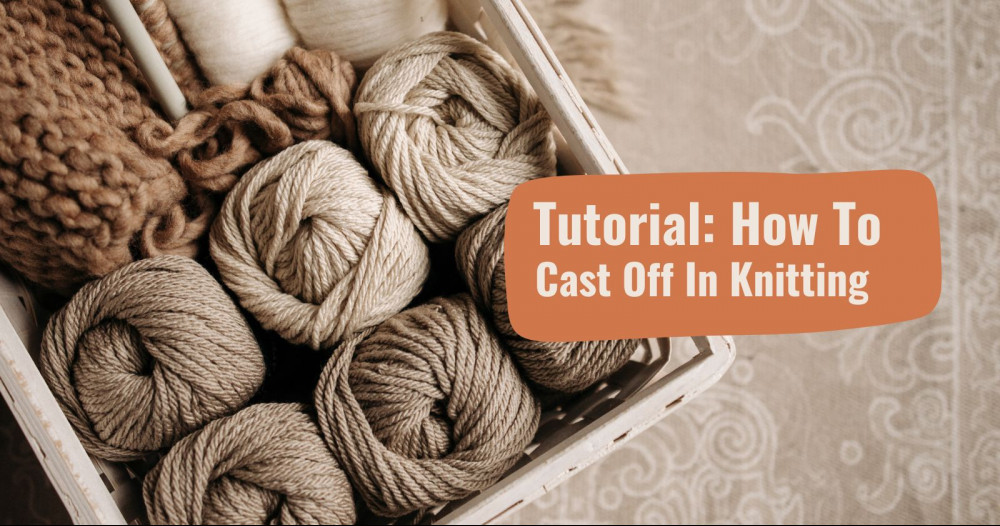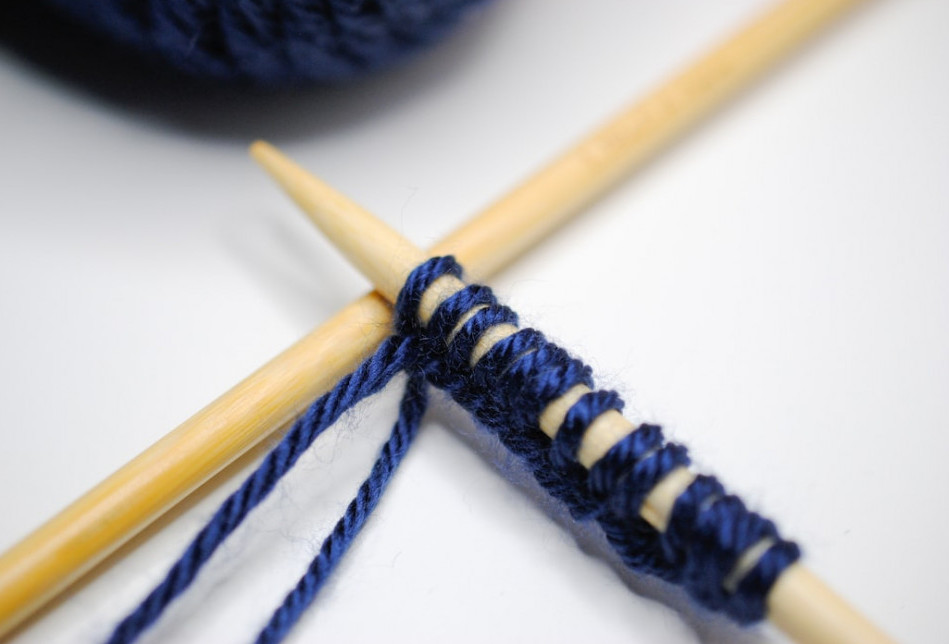In this article, we are going to look at how to cast off in knitting.
Casting off in knitting is an important skill to master as a knitter because if you don’t cast off, your knitting will unravel and all your hard work will be wasted.

How To Cast Off In Knitting
Knitting is a wonderful craft that allows us to create beautiful items by interweaving yarn with needles. However, mastering the various techniques and stitches can be a challenge for beginners. One such technique that every knitter needs to learn is casting off. Casting off, also known as binding off, is essential to finish off your knitting projects neatly. In this comprehensive tutorial, we will delve into the process of how to cast off in knitting, providing step-by-step instructions and useful tips to help you achieve professional-looking results.
Understanding the Importance of Casting Off
Before we dive into the tutorial, it is important to understand why casting off is necessary. Casting off effectively closes off the knitting project, securing the stitches in place and preventing unraveling. It provides a clean and polished edge, making your finished piece look professional and complete.
Step-by-Step Guide to Casting Off:
1. Knitting to the Desired Length:
– Before casting off, you need to ensure that your knitting project has reached the desired length.
– Continue knitting until you have completed the last row, leaving the stitches on your right-hand needle.
2. Knit the First Two Stitches:
– To start the casting-off process, knit the first two stitches just as you would while knitting normally.
3. Pass the First Stitch Over:
– Insert the left-hand needle into the first stitch you knitted, lifting it over the second stitch and completely off the right-hand needle.
– You should now have only one stitch on your right-hand needle.
4. Knit Another Stitch:
– Knit another stitch, as you did in step 2.
5. Repeat Steps 3 and 4:
– Continue to repeat steps 3 and 4 until you have cast off all the stitches, except for one.
– Each time you pass a stitch over, it creates a neat and secure bind-off edge.
6. Finishing Off:
– Once you have one stitch remaining on your right-hand needle, cut the yarn, leaving a tail of around 6 inches.
– Thread the tail through the last stitch, tightening it gently to secure.
Tips for a Professional Finish:
Maintain Consistent Tension:
Consistency in tension is essential when casting off to ensure an even and uniform edge. Pay attention to how tightly you pull the yarn with each stitch.
Use the Right Needle Size:
To achieve the desired tension, use a needle size that complements your project. If you find your stitches too tight or difficult to work with, consider switching to a larger needle.
Sample Casting Off:
Practice the casting-off technique on a small sample piece to gain confidence and perfect your tension before applying it to your main project.
Here is a video tutorial for those who prefer a visual guide.
Conclusion:
Casting off is an important skill for any knitter to learn, as it brings the finishing touch to your knitting projects. By following our comprehensive tutorial or even the video above, you now possess the knowledge and understanding necessary for a professional and polished cast-off edge.
Remember to pay attention to tension, use the correct needle size, and practice to perfect your technique. With each project, you will gain more experience and confidence in casting off, enhancing the overall beauty of your knitted creations.
Happy knitting!

Thank you for this detailed tutorial on casting off in knitting! The combination of written instructions and the video guide makes it so much easier to follow along. I’ve been working on a scarf project, and this is exactly what I needed. One question I have: Are there any specific tips for ensuring a clean and neat finish when casting off? Thanks in advance!
Thanks for stopping by Jake. To ensure a neat finish you will need to make sure that your tension is both even and not to loose or too tight.
This is a great website if you are a knitter and need to learn some finesse when finishing a project. The video is very helpful. I know to have the right needle size but struggle with keeping the correct tension. My mother taught me to knit but I was never very good. I’ll try the tips here and see how far I get. As my talent is suspect I may not get far. But there is hope.
Deedee
There is always hope Deirdre. All it takes is some practise.
Dear Michel
I’ve delved into your comprehensive guide on casting off in knitting, and it’s incredibly informative! The step-by-step breakdown and the emphasis on maintaining consistent tension and choosing the correct needle size offer invaluable insights for beginners and seasoned knitters.
One question that comes to mind: Given the importance of tension in casting off, do you have any specific exercises or techniques to help knitters develop consistent pressure, especially those just starting?
Your mention of practicing the casting-off technique on a sample piece before the main project is a golden nugget of advice. These little tips can make a world of difference in the final outcome of a knitting project.
Thank you for sharing this knowledge. Your dedication to helping fellow knitters achieve a polished finish in their projects shines through in this article. I am looking forward to more insightful content from you!
Warm regards,
Max
Hi Makhsud and thanks for stopping by to comment.
With knitting, tension control only becomes second nature by constant practise. I don’t even think about it anymore, but when I knit too tightly, my fingers get sore, so try and keep relaxed hands and let the wool simply slide through your fingers. That would be my advice about tension.
I thoroughly enjoyed your tutorial on how to cast off in knitting. Your step-by-step instructions were clear and easy to follow. Have you ever tried using a different casting off technique for specific projects? I’ve found that a stretchy bind-off works wonders for creating comfortable edges on items like hats and cuffs. It would be interesting to hear your thoughts on variations. Overall, your guide is a great resource for both beginners and those looking to refine their knitting skills.
Additionally, I appreciate your emphasis on maintaining tension. It’s a detail that can sometimes be overlooked but makes a significant difference in the final look of the project. Personally, I’ve found that practicing consistent tension has greatly improved the overall quality of my knitted items. Do you have any specific tips or exercises for beginners to master this aspect? Your insights would be invaluable for those just starting out on their knitting journey. Thank you for sharing your expertise!
Thanks for stopping by Pasindu.
I must admit that I haven’t tried any other methods of binding off or casting off other than the methods mentioned here. My mom used to use elasticated thread knitted into her cuffs and necklines to make the piece more stretchy which also helped.
As far as tension goes, all you can do is practice on swatches until you get it nailed. The more you knit, the better you become and you soon see if you are knitting too tightly or too loosely.
This is a great tutorial on casting off in knitting. I think anyone who wants to learn the skill would benefit from reading your instructions and watching the video. I am sure a prerequisite though to this post would be to understand everything that comes before. You have a very thorough website. My wife loves to knit. She has taught the hobby to at least one of our granddaughters who is trying to knit a project in time for Christmas. It is fun to watch her learn.
I love it when I see youngsters taking an interest in knitting, as you see it so rarely nowadays in this technological world. Kudus to your wife.
It’s been a minute since I knitted. I have done hand looms when I was in 6th grade Art class, so looking at this website is giving back a lot of nostalgic vibes. My family does a lot of sewing, which is a totally different ball game compared to knitting. I would love to try it soon.